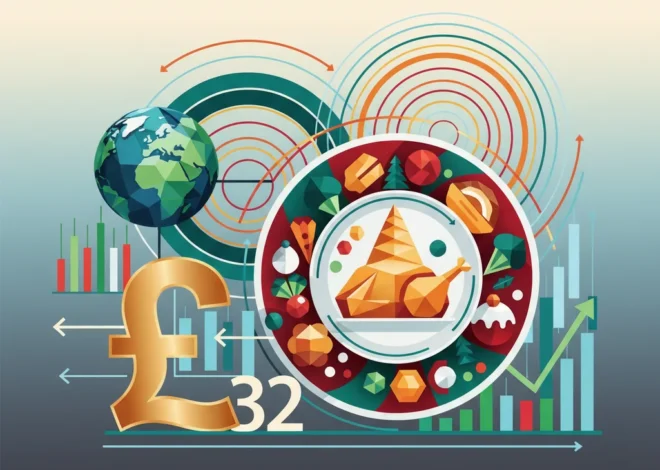
The Stock Market Casino: A Radical Blueprint for a Fairer Financial System
For millions, the modern stock market feels less like a platform for wealth creation and more like a high-stakes casino where the house always wins. It’s a world of bewildering jargon, lightning-fast algorithms, and a pervasive sense that the game is rigged in favor of institutional giants. This sentiment isn’t just paranoia; it’s a rational response to a system whose complexity often obscures its core purpose: to efficiently allocate capital and allow the public to share in the growth of the economy.
The rise of high-frequency trading (HFT), where computers execute millions of orders in fractions of a second, has transformed market dynamics. While proponents argue HFT provides liquidity, critics see it as a mechanism that allows sophisticated players to skim profits at the expense of long-term investors. This growing disconnect has led to a crisis of confidence. But what if we could redesign the system from the ground up? What if we could build a parallel market designed specifically for clarity, fairness, and the average person?
In a thought-provoking letter to the Financial Times, Robert Mercer-Nairne proposed just such a revolutionary idea. He argues that the current system is “broken” and outlines a blueprint for a new, parallel stock market. This post will delve into his proposal, analyze its potential to reshape the world of finance and investing, and explore whether modern financial technology could finally make such a vision a reality.
The Cracks in the Foundation: Why Today’s Stock Market Feels Unfair
To understand the elegance of the proposed solution, we must first diagnose the problem. The current market structure, built over decades, contains several features that create a formidable barrier for the average retail investor. At the heart of the issue is a system optimized for speed and volume, not necessarily for thoughtful, long-term capital allocation.
One of the primary challenges is the advantage held by high-frequency traders. These firms use powerful computers and complex algorithms to exploit tiny price discrepancies, often holding positions for mere milliseconds. This practice now accounts for a significant portion of all equity trading volume. According to some estimates, HFT accounts for 50% or more of trading volume in U.S. equity markets, turning the investment landscape into a technological arms race that individual investors cannot possibly win.
Furthermore, the very structure of continuous trading and the bid-ask spread creates inherent costs. The spread is the small difference between the highest price a buyer is willing to pay (bid) and the lowest price a seller is willing to accept (ask). While small on a per-share basis, this spread represents a persistent transaction cost that erodes returns over time, with market makers and HFT firms often capturing this difference as profit. For the average person making periodic investments, this is a slow, steady drain on their capital.
This complexity has fueled a decline in public trust and direct participation. While the rise of commission-free apps has brought more people into the market, a 2022 Gallup poll found that stock ownership in the U.S., while up from recent lows, still hasn’t returned to the broader levels seen before the 2008 financial crisis. The perception of an uneven playing field remains a powerful deterrent.
The Unpopular Tax We Might Actually Need: A Contrarian Defence of Stamp Duty
A Blueprint for a New Financial Democracy: The ‘Popular Share’ Proposal
Robert Mercer-Nairne’s proposal, outlined in his letter to the FT, doesn’t seek to tear down the existing system but to build a simpler, more accessible alternative alongside it. The core idea revolves around creating a new class of shares, which he terms “popular shares,” designed exclusively for the public.
Here’s how it would work:
- A New Class of Shares: Companies would voluntarily issue “popular shares” in addition to their ordinary shares that trade on the main exchanges. These would carry the same economic and voting rights.
- Once-a-Day Trading: This is the crucial innovation. Instead of continuous, millisecond-by-millisecond trading, all buy and sell orders for popular shares would be collected throughout the day and executed simultaneously at a single, fixed price.
- A Fair, Fixed Price: The execution price would not be determined within this new market but would be set based on the volume-weighted average price (VWAP) of the company’s ordinary shares on the main stock market for that day.
- Zero Bid-Ask Spread: Because all trades execute at one price, the bid-ask spread is completely eliminated. A buyer’s purchase price is identical to a seller’s sale price. This removes a significant layer of friction and cost for retail investors.
This model fundamentally changes the game. By removing the element of speed, it neutralizes the advantage of HFTs. By eliminating the spread, it makes trading more efficient for small investors. It shifts the focus from short-term price fluctuations to a company’s fundamental, day-to-day value, encouraging a mindset of long-term ownership over speculative trading.
To visualize the stark difference between the two systems, consider the following comparison:
| Feature | Current Stock Market System | Proposed ‘Popular Share’ System |
|---|---|---|
| Trading Frequency | Continuous (nanoseconds) | Once per day |
| Pricing Mechanism | Dynamic bid-ask spread | Single, fixed price (based on main market average) |
| Key Advantage | Speed and access to information | Simplicity and equal access |
| Primary Beneficiary | High-frequency traders, market makers, large institutions | Retail investors, long-term holders |
| Investor Focus | Short-term price movements, arbitrage | Long-term company fundamentals |
| Core Technology | Legacy exchange infrastructure, co-located servers | Modern fintech, potentially blockchain-based ledger |
However, dismissing it entirely would be a mistake. The true value of this idea may not be in its literal implementation but in the principles it champions. It serves as a powerful critique of the status quo and a North Star for fintech innovators. We are already seeing echoes of this concept in apps that allow for fractional share investing and in “round-up” services that batch small purchases. The future of investing may not be a single parallel market, but a spectrum of financial products inspired by this push for simplicity, fairness, and a renewed focus on long-term value creation. This proposal is less a finished blueprint and more a powerful “what if” that could inspire the next wave of financial technology.
The Technological Backbone: Can Fintech and Blockchain Deliver?
A decade or two ago, the infrastructure required for such a system would have been prohibitively expensive and complex. Today, advances in financial technology and distributed ledgers present a clear path forward. This is where the proposal moves from a theoretical exercise in economics to a tangible technological possibility.
Blockchain technology, in particular, seems tailor-made for this kind of system. By representing “popular shares” as digital tokens on a distributed ledger, several key advantages emerge:
- Transparency: Every transaction would be recorded on an immutable ledger, providing a perfect audit trail and drastically increasing trust.
- Efficiency: Smart contracts could automate the entire clearing and settlement process. The daily auction, price calculation, and transfer of ownership could be executed flawlessly without the need for multiple intermediaries. This would dramatically lower costs.
- Accessibility: A blockchain-based system could be accessed globally through simple, secure digital wallets, truly democratizing ownership.
Major financial institutions are already exploring tokenization for real-world assets, and reports from firms like Deloitte highlight the transformative potential of digital assets in mainstream finance. Mercer-Nairne’s proposal provides a perfect use case for this burgeoning technology, moving it from the speculative world of cryptocurrencies to the core of our capital markets.
The Perfect Storm: How Political Optimism and Geopolitics Sent Japanese Stocks to Record Highs
The Road from Radical Idea to Market Reality
Transforming this concept into a functioning market would be a marathon, not a sprint. The first and most significant hurdle is regulation. Financial regulators worldwide would need to create a new framework to govern such a market, ensuring investor protection while fostering innovation. This would involve a concerted effort from bodies like the SEC in the United States and the FCA in the UK.
Next comes corporate buy-in. Why would a company like Apple or Microsoft go through the trouble of issuing a new class of shares? The incentive would be to cultivate a more stable, long-term shareholder base, diversify ownership, and enhance their brand as a company committed to financial inclusion. In an era of increasing focus on ESG (Environmental, Social, and Governance) principles, offering a “democratic” share class could be a powerful statement.
Finally, the market infrastructure itself would need to be built. This is where fintech companies and innovative exchanges could step in, viewing it not as a threat but as the next great frontier in the evolution of trading and the broader economy.
The Link Room Strategy: Transforming Corporate Dead Space into High-Value Assets
Conclusion: Redefining the Future of Investing
The current stock market is a technological marvel, but its evolution has left many feeling like outsiders looking in. Robert Mercer-Nairne’s proposal for a parallel, simplified market is more than just a clever idea; it’s a direct challenge to the complexity and perceived unfairness of the modern financial system.
While the creation of a full-fledged “popular share” market faces significant obstacles, the principles behind it are already shaping the future. The demand for simplicity, transparency, and lower costs is the driving force behind the entire fintech revolution. We see it in commission-free trading, the rise of robo-advisors, and the push for blockchain-based settlement systems.
Whether or not we ever buy a “popular share,” the conversation itself is a victory. It forces us to ask fundamental questions about the purpose of our markets: Are they for speculation or for investment? For the few or for the many? For the short term or for the long haul? The answers will define the landscape of finance for generations to come, and they may well lead to a system that finally feels like it was built for everyone.


